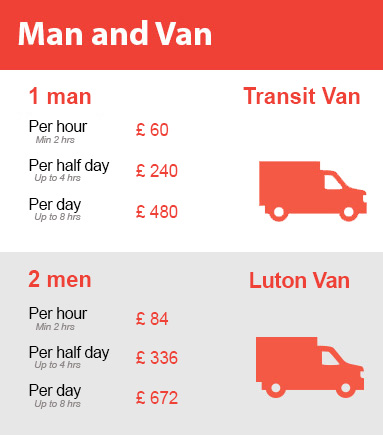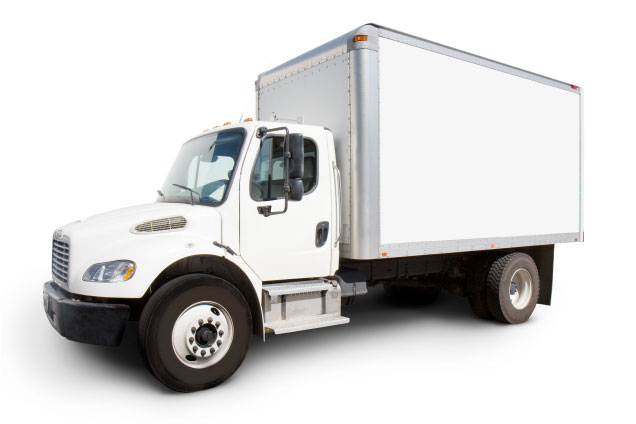Optimize Your Solo Heavy Lifting Strategy
Posted on 22/05/2025
Optimize Your Solo Heavy Lifting Strategy: Complete Guide for Safe and Effective Lifting Alone
Heavy lifting is an essential component of strength training, athletic conditioning, and many labor-intensive tasks. However, when you choose to lift heavy weights alone, you must optimize your solo heavy lifting strategy to ensure safety, maximize effectiveness, and prevent injuries. Whether you're a weightlifter, home gym enthusiast, or someone who deals with heavy lifting at work, this comprehensive guide covers all the essentials for refining your solo lifting techniques and strategies.
Table of Contents
- Why Optimize Your Solo Heavy Lifting Strategy?
- Assess Your Readiness: Are You Prepared to Lift Alone?
- Key Principles of Safe Solo Heavy Lifting
- Essential Equipment for Safe Solo Lifting
- Customize Your Heavy Lifting Routine
- Mastering Progressive Overload on Your Own
- Injury Prevention: Recovery, Mobility, and Mindfulness
- Common Mistakes in Solo Heavy Lifting and How to Avoid Them
- Final Tips to Optimize Your Solo Heavy Lifting Strategy
Why Optimize Your Solo Heavy Lifting Strategy?
As more people build home gyms or have to train without partners, the need to optimize solo heavy lifting routines has skyrocketed. Training heavy alone presents unique challenges: no spotting partner, higher injury risk, and limited feedback for form correction. Optimizing your solo heavy lifting strategies not only enhances safety, but also ensures you:
- Maximize strength and muscle gains
- Minimize the dangers of injury when lifting without a spotter
- Build discipline and self-reliance in your training
- Get consistent, measurable results
Taking the time to design and follow an optimized solo heavy lifting plan can be the difference between a strong, resilient body and chronic injuries.
Assess Your Readiness: Are You Prepared to Lift Alone?
Before you even pick up a heavy barbell or object without assistance, it's critical to assess your current physical condition, experience level, and awareness of safe lifting protocol.
Important Readiness Factors
- Experience Level: New lifters should first gain experience with lighter weights and supervised form correction.
- Physical Health: Current injuries, lack of flexibility, or joint/muscle weaknesses increase solo lifting risks.
- Mental Focus: Solo lifting requires discipline and attention to form--distractions can be hazardous.
If you're new to lifting heavy weights on your own, consider videoing your form, or booking remote sessions with a certified coach before progressing.
Key Principles of Safe Solo Heavy Lifting
When you're determined to optimize your solo heavy lifting strategy, technique becomes your best friend. Proper form and body awareness are essential when you don't have another set of eyes monitoring your lifts.
1. Start with the Fundamentals of Safe Lifting
- Breathe and Brace: The foundation of all safe heavy lifting is learning to engage your core and breathe properly. Inhale deeply before you lift, brace your core as if preparing for a punch, and exhale during exertion.
- Neutral Spine Alignment: Never round your back, especially during deadlifts or squats. Use mirrors or record yourself to check your posture.
- Controlled Movements: Optimize your solo heavy lifting sessions by lifting with intention--avoid jerky, uncontrolled motions that can cause injury.
- Know Your Limits: Don't attempt single-rep max lifts when alone. Stick to weights that allow 3-8 reps with excellent form.
2. Use Repetition and Volume Wisely
- Choose a heavier weight for fewer reps, but never at the expense of technique.
- Implement submaximal training--stop 1-2 reps short of failure.
- Incorporate accessory work like lunges, planks, or resistance band exercises to support major lifts.
Essential Equipment for Safe Solo Lifting
A well-equipped setup is vital to optimize your solo heavy lifting approach. The right gear protects you and makes it easier to push your limits safely.
Must-Have Gear for Solo Heavy Lifters
- Power Rack or Squat Cage: The single best investment for home lifters. Safety pins and adjustable supports catch the bar if you fail a lift during squats or bench presses.
- Quality Barbells and Plates: Use barbells rated for heavier loads (Olympic standard). Ensure plates fit securely and clip collars are used.
- Lifting Belt: Provides core support during maximal lifts, particularly for deadlifts and squats.
- Chalk or Lifting Gloves: Improves grip, minimizes slippage, and increases confidence.
- Flat, Stable Footwear: Lifting shoes or even barefoot training (where safe and allowed) improve stability.
- Mirrors or Video Setup: For self-assessment of technique in real-time.
Optional accessories: resistance bands, blocks, fractional plates for micro-loading, and foam rollers for recovery.
Safety First!
Never substitute proper safety equipment with makeshift solutions. When in doubt, err on the side of caution--prioritize safety to optimize your heavy solo lifting success.
Customize Your Heavy Lifting Routine
A tailored program is crucial for maximizing solo lifting results. Generic plans may not account for your unique limitations, goals, and available equipment.
Variables to Personalize in Your Solo Heavy Lifting Plan:
- Frequency: Aim for 2-4 heavy lifting sessions per week. Adequate rest is critical to recovery and progress.
- Volume and Intensity: Monitor total sets and reps. As a solo lifter, utilize moderate intensity for most sets to mitigate injury risks.
- Exercise Selection: Focus on compound lifts: squats, deadlifts, presses, rows. Supplement with isolation and stability exercises to correct weaknesses.
- Rest Intervals: Give yourself 2-5 minutes between heavy sets for maximal recovery.
- Auto-Regulation: Adjust intensity and volume based on daily performance and feel, rather than sticking rigidly to the written plan when fatigued or sore.
Sample Solo Heavy Lifting Split
- Day 1: Squats, lunges, Romanian deadlifts
- Day 2: Bench press, push-ups, triceps work
- Day 3: Deadlifts, pull-ups/rows, biceps curls
- Day 4: Overhead press, lateral raises, ab work
Every 4-6 weeks, change some accessory movements, and review your progress using training logs or apps.
Mastering Progressive Overload on Your Own
To optimize your solo heavy lifting program, you need progressive overload--the gradual, consistent increase of weight, reps, or intensity over time. This is the gold standard for gaining muscle and strength, but it must be managed carefully when training alone.
Strategies to Safely Apply Progressive Overload Solo
- Use Micro-Loading: Add tiny increments (1-2.5 lbs per side) instead of big jumps in weight.
- Add Repetitions Cautiously: Before increasing weight, see if you can add another rep or two within your target range while maintaining perfect form.
- Monitor Recovery: Only advance intensity if you're fully recovered from your last session.
- Track Everything: Keep a detailed log of weights, reps, rest intervals, and subjective notes on difficulty.
When you optimize your solo heavy lifting regimen with sound overload principles, you'll experience steady, sustainable strength gains without burning out or risking injury.
Injury Prevention: Recovery, Mobility, and Mindfulness
One of the biggest risks with heavy solo lifting is lack of immediate support if something goes wrong. Proactive injury prevention is key.
1. Warm-Up and Cool-Down
- Always dedicate at least 10 minutes to mobility drills, dynamic stretching, or light cardio before lifting heavy weights on your own.
- After lifting, spend 5-10 minutes on static stretching and foam rolling.
2. Respect Recovery
- Schedule regular rest days into your program.
- Prioritize 7-9 hours of sleep per night for repair and growth.
- Consider active recovery--light cardio or yoga--on non-lifting days.
3. Listen to Your Body
- Pain is not "just part of the process." Discomfort can indicate poor form or impending injury.
- If a joint aches or something feels "off," stop and reevaluate--never push through sharp pain.
4. Maintain Mindfulness
- Stay 100% focused during heavy lifts. No music distractions or texting between sets when handling maximal weight.
- Mental visualization before sets helps prepare your CNS and boosts performance.
Common Mistakes in Solo Heavy Lifting and How to Avoid Them
Even experienced lifters encounter pitfalls when training alone. Here are top errors to watch out for as you optimize your solo heavy lifting strategy:
- Skipping Warm-Ups: Cold muscles are prone to strains and tears.
- Lifting Too Heavy, Too Soon: Always build a solid technical and strength base before attempting maximal loads on your own.
- Poor Equipment Setup: Not using safety bars, using worn-out gear, or poor lighting increases accident risk.
- Neglecting Mobility: Stiff muscles and joints lead to compromised form, especially without a partner correcting you.
- Ignoring Rest and Recovery: Overtraining alone leads to breakdown, not breakthrough.
Final Tips to Optimize Your Solo Heavy Lifting Strategy
- Prioritize Safety Above Ego: Never risk injury for reps or numbers. Your ability to lift another day is more important than the weight on the bar.
- Educate Yourself: Continuously study proper form for every movement--books, reputable websites, and instructional videos are great resources.
- Stay Accountable: Consider sharing your training logs online or with a friend for accountability and feedback.
- Celebrate Progress: Small, consistent improvements are the key to lifelong strength and resilience.
- Schedule Periodic Form Checks: Use slow-motion video from multiple angles to self-audit your lifts and adjust as needed.
In conclusion, to optimize your solo heavy lifting strategy is to be smart, proactive, and dedicated. Mastering foundational techniques, using proper equipment, following a customized plan, and safeguarding your health will not only boost your performance but also keep you lifting for years to come. Build strength the right way--one lift at a time.
Ready to start optimizing your solo heavy lifting? With careful planning and commitment, solo training can be both safe and incredibly rewarding. Keep learning, stay vigilant, and enjoy your progress!







